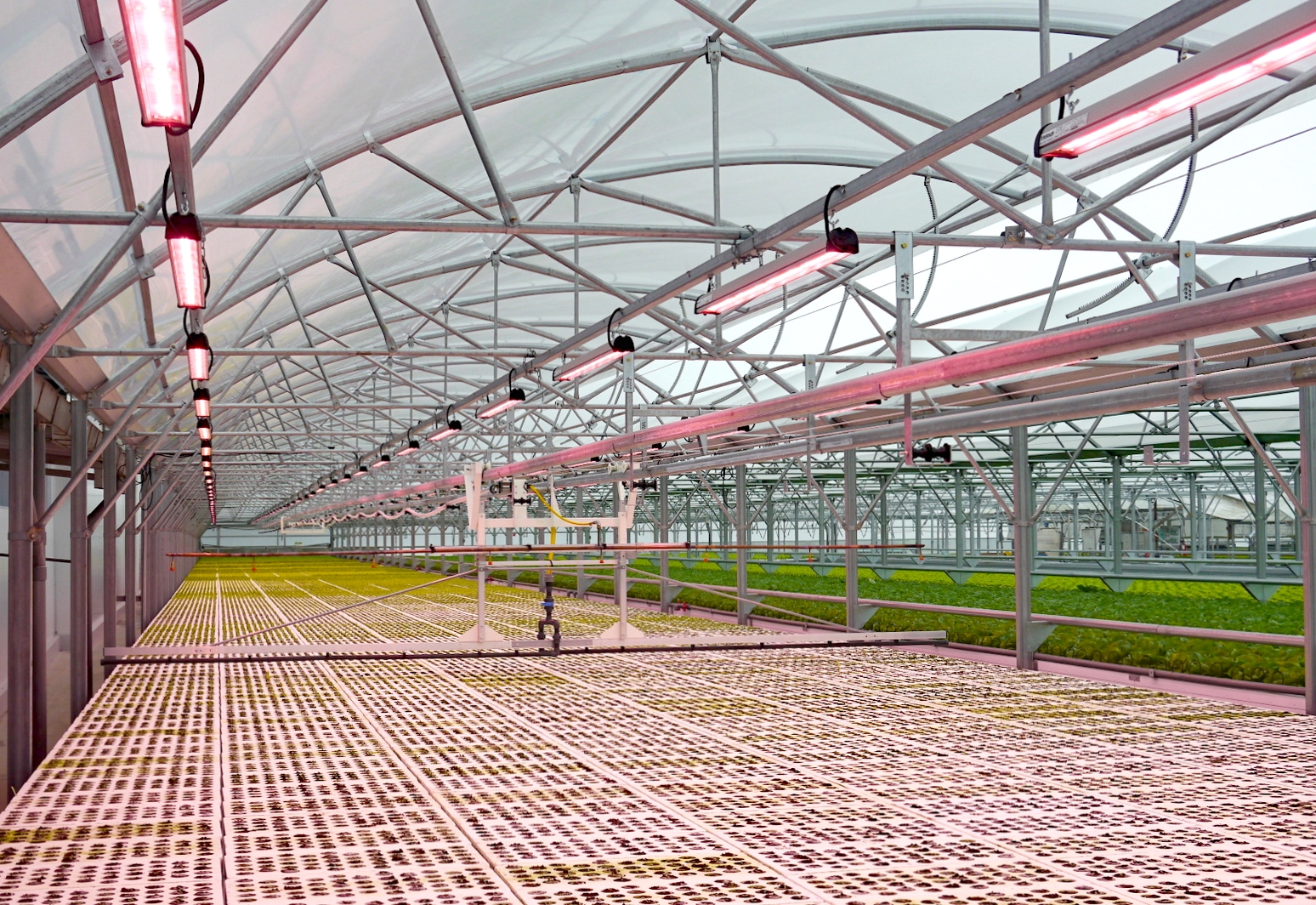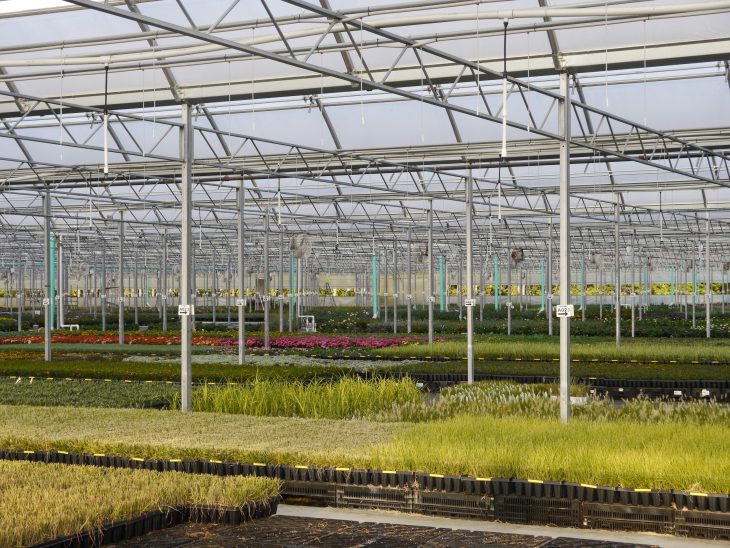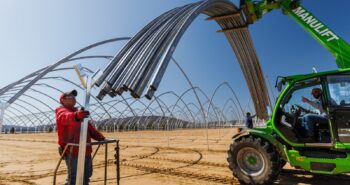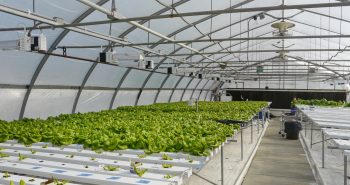This post is also available in: ![]() English
English ![]() Français (French)
Français (French)
Introduction
The latest droughts and successive heat waves in Europe show that we will have to rethink the agricultural model of tomorrow. A more rational agriculture that is less greedy in terms of inputs (fertilizers, phytosanitary products, etc.), that respects the soil and, above all, that is innovative in terms of consuming less water on a given surface, must quickly emerge. The new generations of producers will have no choice but to adapt to climate change and the evolution of environments.
Today on the planet, the surfaces produced under greenhouse in soilless culture (use of substrate and/or hydroponic culture) increase in a sustained way. A striking example is that for 1kg of tomatoes produced in open-field, about 60L of water is used, not to mention the numerous tractor passages to treat the crops… In a greenhouse, the average consumption is limited to about 15L of water for yields up to 5 times higher for tomatoes (source GRODAN), with the possibility of planting crop auxiliaries to fight pests (biological control) and also to pollinate the flowers
In addition, the latest technologies available from substrate manufacturers combined with new irrigation and climate management techniques in greenhouses make it possible to be even more economical throughout the year. The possibility to recover and recycle drainage water in greenhouses also offers a lot of perspectives!
In this two-part post, we will see how greenhouse production allows for crop protection and significant water savings.
Crop protection
Crop protection is a central subject for all farmers on earth. Indeed, during the life cycle of a plant, many biotic and abiotic elements will potentially limit its growth or even cause its death.

When talking about abiotic factors, we can mention:
- temperature
- sunshine
- humidity
- wind
- precipitation
- soil pH
- presence of minerals in the soil
- soil aeration
- water salinity
- water pH
- etc.
And the biotic factors:
- predation
- diseases and parasitism
- cross-pollination
- proximity to humans
- modification of the environment by another individual
- …
In open field cultivation, without crop protection, the exposure to these factors will be maximal. It will therefore be more difficult to predict yields and crop quality from one year to the next, with the risk of experiencing extreme climatic events, as we are likely to see more and more in the future…
Soil depletion and erosion are also major constraints, especially in monoculture. More vulnerable crops will be more susceptible to pest and disease pressure. This is a vicious circle that will require rapid action with chemical treatments in most cases. In addition to the impact on the environment and the health of consumers, this will represent significant costs for the farmer.
Major water savings
The evolution of production techniques in recent years, particularly with hydroponics (soil-less cultivation), has led to enormous savings in water.
Furthermore, it helps to protect the soil and water reserves (aquifers) when the leachates are well captured (or recycled) rather than disseminated in the environment. This greatly reduces the risks of pollution of waterways with chemicals and fertilization residues such as nitrogen and phosphorus responsible for eutrophication = development of algae and bacteria.

Some experts say: “With hydroponics, water is constantly recycled, making these systems 90 to 98% more water efficient than traditional agriculture, while eliminating fertilizer runoff into the environment,” according to the blog FoodFuture.co.
These words were relayed by the CEO of Gotham Greens Mr. Viraj Puri in the USA:
[This system] allows us to use about 95 percent less water than conventional field farming. We use less than a gallon of water for every head of lettuce we produce.
CEO Viraj Puri on the Agritecture blog
Soil-less production of certain crops (tomatoes, peppers, cucumbers, peppers, strawberries…) in substrates with peat or coco fiber and a drip irrigation system can also be very water efficient.
An experimented grower will analyze with the help of probes and a climate computer what will be the best moments to bring the nutritive solution and manage the water stress. In short, everything will be thought to bring the optimal quantity of water with the best adapted concentration of fertilizer. The excess nutrient solution that will be leached can also be reprocessed in the system and reused after filtration and elimination of germs. Water losses will be minimal in this system.
Another important point is that greenhouse cultivation offers a large surface area with the roof to capture rainwater and store it in semi or completely buried tanks. Rainwater usually has a pH close to neutrality and sufficient quality to be used directly as a fresh water source in fertigation systems.
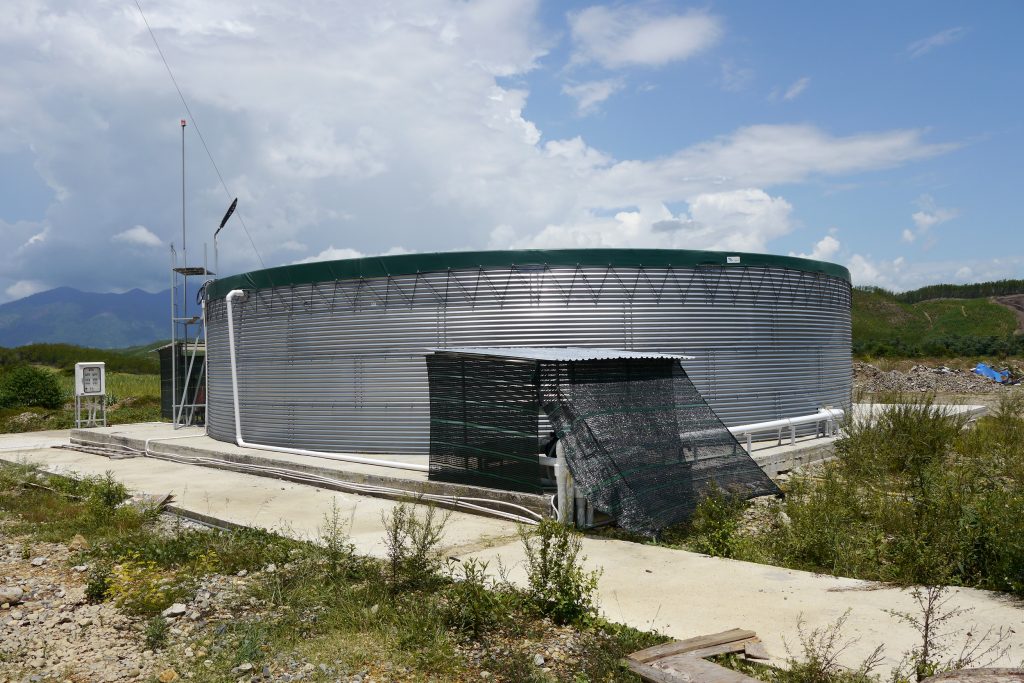
A 500m3 tank in Vietnam to collect rainwater on a 2ha greenhouse complex
Conclusion
We have seen how greenhouse cultivation could be a preferred solution to respond to future climatic crises, and in particular to the extreme droughts and heat waves that are occurring around the world. Crop protection and water savings are two major advantages of this production model. In addition, it will facilitate investments by financial institutions and the sustainability of yields for the producer.
However, greenhouse cultivation must coexist with open field cultivation, which is also part of the solution, particularly for cereals and protein crops such as corn and soybeans. The field cultivation will also evolve, the agroecology will become the current of thought and the model of the future to be able to continue to produce on a large scale while respecting the ecosystem with a stronger diversification of the cultures while respecting the grounds.
Finally, the development of small and medium-sized farms with one or two greenhouses and less than one hectare of open field cultivation will also be part of the solutions to gain resilience around the world. Proximity to consumers (farmers market) and reduced environmental impact will be important criteria to be considered by the authorities before issuing new permits.
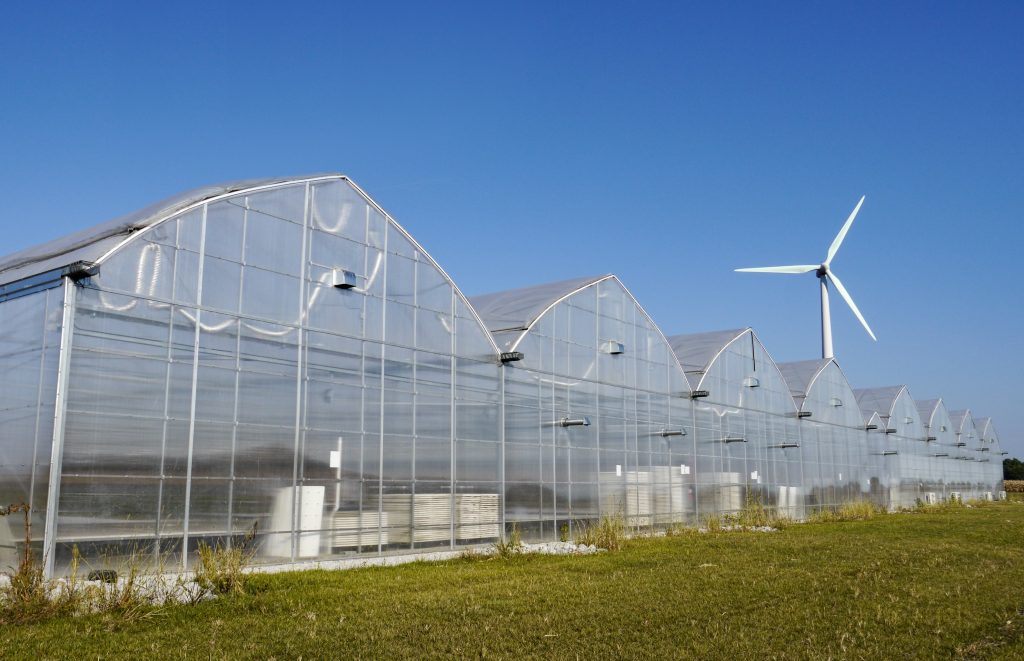
The use of renewable energies will also be an important point to limit the carbon impact of the greenhouses…
